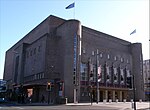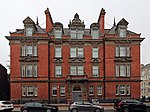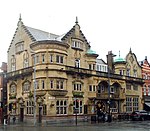Wapping Tunnel

Wapping or Edge Hill Tunnel in Liverpool, England, is a tunnel route from the Edge Hill junction in the east of the city to the Liverpool south end docks formerly used by trains on the Liverpool-Manchester line railway. The tunnel alignment is roughly east to west. The tunnel was designed by George Stephenson with construction between 1826 and 1829 to enable goods services to operate between Liverpool docks and all locations up to Manchester, as part of the Liverpool and Manchester Railway. It was the first transport tunnel in the world to be bored under a city. The tunnel is 2,030 metres (1.26 mi) long, running downhill from the western end of the 262 metres (860 ft) long Cavendish cutting at Edge Hill in the east of the city, to Park Lane Goods Station near Wapping Dock in the west. The Edge Hill portal is near the former Crown Street Station goods yard. The tunnel passes beneath the Merseyrail Northern Line tunnel approximately a quarter of a mile south of Liverpool Central underground station.
Excerpt from the Wikipedia article Wapping Tunnel (License: CC BY-SA 3.0, Authors, Images).Wapping Tunnel
Blackburne Place, Liverpool Georgian Quarter
Geographical coordinates (GPS) Address Nearby Places Show on map
Geographical coordinates (GPS)
| Latitude | Longitude |
|---|---|
| N 53.399722222222 ° | E -2.9697222222222 ° |
Address
Blackburne Place Ventilation Shaft
Blackburne Place
L8 7NL Liverpool, Georgian Quarter
England, United Kingdom
Open on Google Maps








